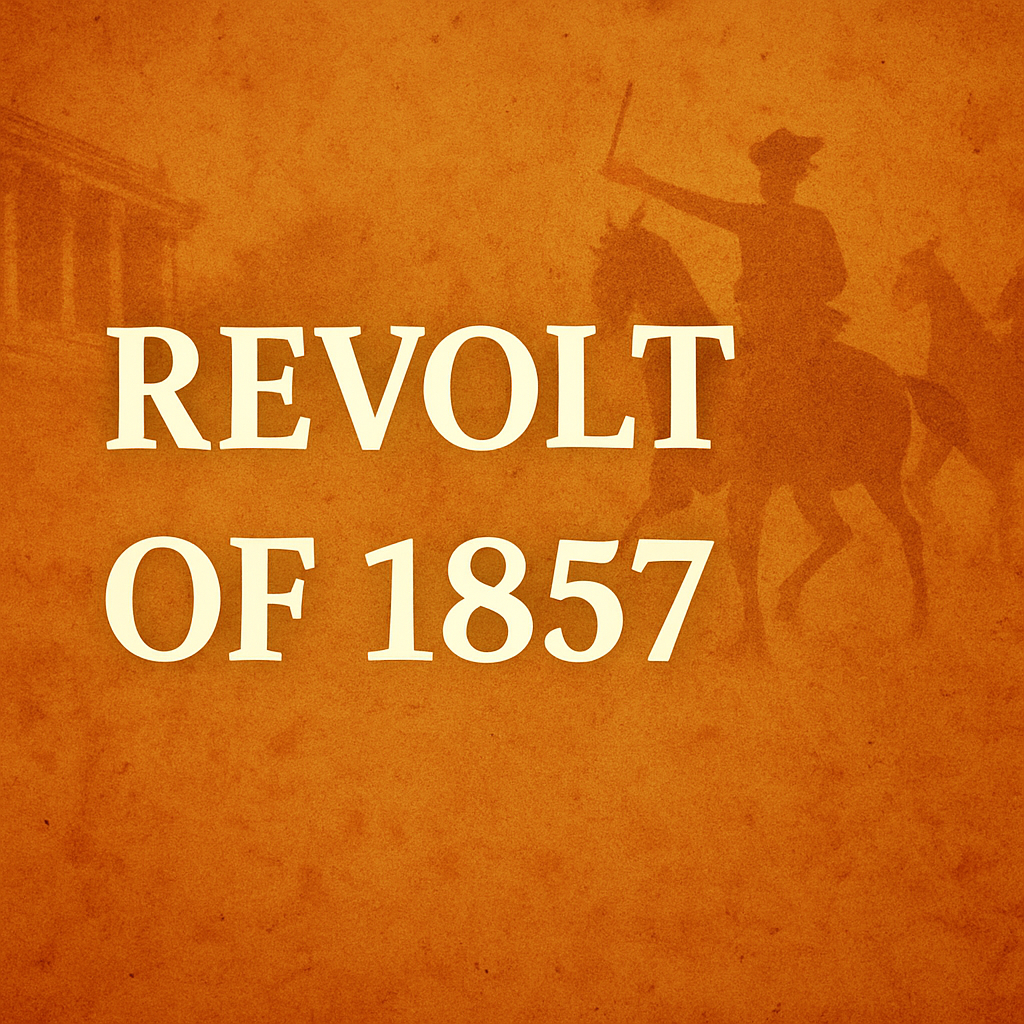The Revolt of 1857 - First War of Indian Independence
🛡️ The Revolt of 1857: First War of Indian Independence
The Revolt of 1857 was the first large-scale uprising against British rule in India. It began as a military mutiny but soon turned into a nationwide struggle. This revolt marked the beginning of India's long journey toward independence.
1. Political Causes
- Annexation Policies: British expansion using the Doctrine of Lapse led to annexation of kingdoms like Jhansi and Awadh.
- Loss of Authority: Indian rulers lost status; the Mughal emperor was reduced to a symbolic figure.
2. Economic Causes
- Heavy Taxation: Revenue systems like Zamindari exploited peasants.
- Deindustrialization: British goods destroyed local industries, especially textiles and handicrafts.
3. Social and Religious Causes
- Cultural Insensitivity: British reforms were seen as interference in Indian traditions.
- Fear of Conversion: Many feared forced Christianization due to missionary activities.
4. Military Causes
- Discrimination: Indian sepoys faced unequal pay and promotion.
- Greased Cartridges: Use of cow and pig fat on cartridges offended both Hindu and Muslim sentiments.
5. Immediate Cause
- Mangal Pandey’s Revolt: On 29 March 1857, he attacked British officers and was executed.
- Meerut Uprising: On 10 May 1857, sepoys revolted and declared Bahadur Shah Zafar as the emperor in Delhi.
6. Geographical Spread
- Major Centres: Delhi (Bahadur Shah Zafar), Kanpur (Nana Sahib), Lucknow (Begum Hazrat Mahal), Jhansi (Rani Lakshmi Bai).
- Limited Spread: Mainly affected North and Central India, not the South.
7. Different Fields Affected
- Political: End of East India Company rule; power transferred to British Crown.
- Social: Rise of Indian nationalism; temporary Hindu-Muslim unity.
- Military: Army reorganized; increase in British soldiers.
- Economic: Infrastructure built more for British benefit; continued economic exploitation.
8. Reasons for Failure
- No Central Leadership: The revolt lacked coordination and unified planning.
- Limited Weapons: Rebels lacked modern arms and war supplies.
- Betrayals: Allies like the Scindias and Nizams supported the British.
9. Consequences
- Company Abolished: The British Crown took direct control of India in 1858.
- Policy Shifts: More careful about Indian traditions; Divide and Rule started.
- New Army Policies: Recruitment strategy changed to avoid future mutinies.
10. Legacy and Interpretation
- First War of Independence: Indian historians like V.D. Savarkar viewed it as the first freedom struggle.
- National Heroes: Figures like Rani Lakshmi Bai and Mangal Pandey became symbols of resistance.
📌 Conclusion
The Revolt of 1857 marked the awakening of Indian resistance. Though it failed, it lit the flame of nationalism and inspired future movements. It remains a cornerstone in India's journey toward independence.
